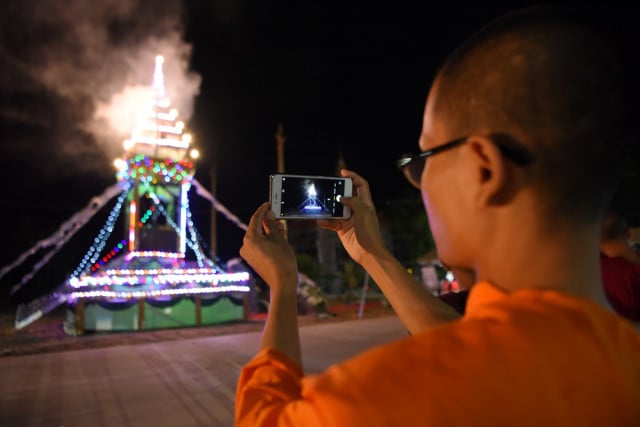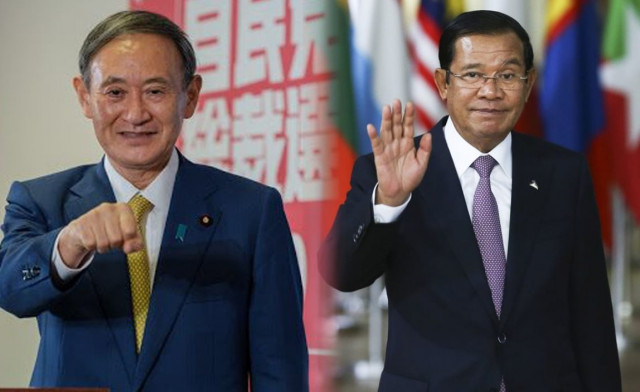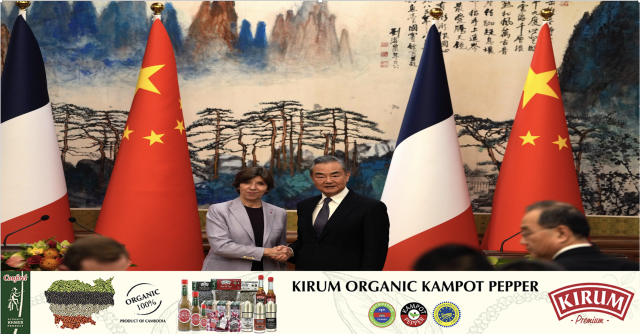Cambodian Buddhism Deals with Social Media

- By San Pisith
- June 28, 2022 6:59 PM
Monk body adapts to keep connection
Buddhism has had a unique role in Khmer state and society ever since its arrival. The members of the Sangha, the monk body, have adapted well to changing times – catastrophic interruptions notwithstanding – and continue to receive high respect from the monarchy, politicians, merchants, and the people generally.
Khmer people rightly regard the temple as communal center linking the monastic community with secular life, the teachings of the Buddha as the philosophy of life, and members of the Sangha as the teachers of the Dhamma.
The Dhamma, as taught by the Buddha, is the law that upholds social order and the path that liberates human beings from suffering. However, Buddhism recognizes change as an inescapable feature, and the rising age of social media means that communal interaction between Sangha members and the lay community is not the same as it was for centuries or even millennia.
Is the Khmer Sangha ready for the Age of Social Media? Does Buddhist principle fit the digital world? What will happen to future Sangha generations if Khmer Buddhism is unable to position itself well in this digital era?
Cambodia has 12.6 million social media users, equivalent to 73.9% of the total population. Facebook is the main platform, even beyond being part of social media, and sometimes people even interchangeably refer to it as the Internet, as in several Southeast Asian countries. People of all ages use it as a means of daily communication with family and friends, running small businesses, expressing opinions, sharing information, playing games, and engaging in entertainment and educational content.
There is no denying that, on a certain level, the increasing number of people who can afford smartphones and the Internet – Khmer Internet access is primarily phone-based and never went through a PC- or notebook-phase – is a positive sign of the Cambodian government's efforts to modernize Khmer society.
However, the rising age of social media presents Khmer Buddhism with the challenge to either keep trusting its own traditional medium of education or switch to the digital one, and it seems that this challenge has so far not been systematically addressed yet. Generally, Sangha members seem to regard it as a blessing for Khmer Buddhism that digitally, one can now reach wider audiences faster than the via traditional media, i.e. one Sangha member has the potential to reach a hundred, thousand, or even a million people through just one livestream of Dhamma talk. However, to be responsible, it is now crucial not to leave a critical perspective on social media impact out of the picture. The main purpose of social media needs to be carefully addressed by the Sangha to find out the psychological impacts on Sangha members as well as laypeople.
In Wisdom of Sustainability: Buddhist Economics for the 21st Century, Sulak Sivaraksa, the respected Thai Buddhist scholar, expresses his concerns on how modernity estranges a meaningful life for the Thai people. He argues that “modernity has uprooted our traditional ways, shopping malls replaced temples as the centers of communal life.” When the power of consumerism overtakes spirituality, there will be little space for worshiping the Buddha.
For most people, it is a tough choice between going for modernity with a minimally meaningful life or sticking to a meaningful life with less economic growth. The lure of social media might be bigger still, but the two are actually intertwined. Sooner or later, people will ask themselves, should they go shopping or go to Buddhist temples? should they spend more time online or making merit? Ideally for them, they’ll be in the mall, surfing and messaging.
These are the challenging scenarios that require the Sangha to review the role of Buddhism in Khmer society and envision a plan for the next five to ten years. If spending most time shopping and/or staying online makes people happy and promises them a meaningful life, Buddhism needs to deal with that.
Next to many other things, technology is a tool to make our life more convenient. Within 2,600 years, Buddhism has experienced several transitions, and technology has been a part of most of them. Woodblock printing and the silk road are two key examples indicating how Buddhism used technology and network communication to facilitate Buddhist activities. The Buddhist medium of instruction has been evolving from oral transmission to written texts and from written texts to woodblock-printed texts, and so on. In the digital age, Buddhism also adjusts itself to digital technology such as radio, television, and now the Internet.
Social media is the current version that has been introduced to the world of network communication, and the Khmer Sangha is very friendly towards it. However, Harvard Professor Shoshana Zuboff, in The Age of Surveillance Capitalism, coined the term “instrumentarianism” to explain how big tech companies use power to monitor and manipulate what we can and can’t see or do online. Technology is developing fast, and we need to watch that from the point that we use technology as long as we use it, it doesn’t get to the point where it uses and controls us.
This concerns the content creation side and here the monk body itself, just as much as the laity to whom the Dhamma is preached. A recent study by the OECD has provided evidence on the link between mental health and social media users. It found that those who used social media more intensively on average had lower life satisfaction. Social media use is strongly associated with anxiety, loneliness, and depression.
The impact of social media on Cambodian teenagers’ mental health needs to be carefully examined. Since most Sangha members are teenagers and more than half of them – one often feels, all of them; unfortunately, we have no reliable data – own at least one social media account, the Sangha council should consider this as a prioritized issue. Although staying in contact with family and friends is easier than ever, the materialistic lifestyle and inappropriate content flying all over social media could affect the way Sangha live, study and practice the Dharma.
Besides that, social interaction between the young Sangha members and the lay community on social media is a double-edged sword; it can be a medium to either ensure or jeopardize the future of Khmer Buddhism. The Vinaya, the rules of conduct for the Sangha, is the core of keeping Buddhism sustainable, and the Vinaya applies to the Sangha’s performance on social media just as much as elsewhere. Every single word and image that Sangha members put on social media platforms has a potential impact on how future generations see Buddhism. Social media is a new technological tool that gives people the potential to speak and act faster than before. However, driving fast may help us reach our destiny quickly, but it may also cause an accident that might interrupt our journey and prevent us from reaching our destiny. The journey of the Sangha is to liberate themselves from the cycle of suffering. Clinging too much to the materialistic world could jeopardize that path to liberation.
But are the teachings of the Buddha outdated in the days of social media? Unsurprisingly, they are not; his teachings reach us in the digital age with the same relevance, and accuracy, as ever before. Social media is regarded as a form of speech in Buddhism. The term ‘Dhammakathika’ is used to designate a public speaker in the Sangha community. Dhammakathika literally means someone who teaches Dhamma to others. In the discourse called Udāyīsutta, the Buddha says to his attendant, Venerable Ananda, perhaps the one among his disciples most readily embodying the ideal of the young Sangha member today, “Ānanda, it’s not easy to teach Dhamma to others. You should establish five things in yourself before teaching Dhamma to others.”
These are, ‘I will teach step by step, I will teach explaining my methods, I will teach out of kindness, I will not teach while secretly hoping to profit, I will teach without hurting myself or others.’ A better guideline for social media use can hardly be imagined for any influencer – but for the Sangha, this is mandatory, and rightly so.
Watching popular people and trying to be one of them is something that most people tend to do on social media. Recently, we have witnessed an increasing number of Sangha members getting involved in social media, and even entertainment, and the show industry. Some of them are trying to be Vloggers, YouTubers, film directors or even taking an acting role in some cases.
These roles of monks may lead to short-term popularity, but they risk endangering the future of Khmer Buddhism by slipping into secularism and eventually falling to the path of worldly attachment.
There is a reason why traditionally, Sangha members preach by hiding behind a fan – it’s not their beauty that should attract people to listen to them, but also, the desire for their own handsomeness leads them straight away from their own liberation. That society pushes into the other direction is not an argument against this, but for this, as Buddhism provides for an alternative to this world, if right within this world, and especially so for the Sangha.
We need to remember that although Buddhism doesn’t define itself via exclusion from the world like it is like asceticism, it must not engage itself too much with the materialistic world either. The Middle Path once again describes this aspect too; one might say that the concept of “Socially Engaged Buddhism” is a way of positioning oneself between these two phenomena, too. If Sangha members get too much involved in Facebook, Buddhism will not be able to keep its identity.
The principle of detachment is the best approach that Sangha members can apply in the age of social media. It would give the Sangha members the potential to maintain their identity. Buddhism should not try so hard to catch the modern world, but rather try to stick with who they are, with their unique role, and be ready to receive and help those exhausted and mistreated by the digital world. Importantly, to prevent themselves from psychological damage, it requires Sangha members to examine the potential harm of social media to mental health.
But this is tricky indeed; how can young novices be saved from the traps of social media; how can older ones be encouraged to refrain from vanity and fame-seeking and focus on preaching the Dhamma according to the Buddha’s rules instead? Social media is a form of entertainment that holds the attention and interest of users. In the Vinaya, monks are not allowed to engage in any sort of entertainment such as dancing, singing, or music. However, in the Buddha’s time, that rule referred to live performances, which is all that existed. If that rule also applies to the contemporary forms of entertainment television, video, radio, or social media, it would be difficult for the Khmer Sangha to engage in the current age.
To reject all social media would entirely cut the Sangha off from society, and that would not be an ideal way to apply Buddhism to a new generation as well. However, engaging on social media requires the Sangha to be mature enough to handle what is going to happen in the digital world, and it is up to the Sangha leadership, as it always has been – Sangha Council, Abbots, and scholar monks – to guide, encourage, and to set boundaries as well.
Any Sangha member today needs to be aware of what kind of content to engage with on social media, who the right persons to engage with are, how to engage, and when is the right time for him to engage. To deal with the rising age of social media, it is necessary for Sangha Council and Abbots to develop digital leadership competence and requires monasteries to introduce training programs on the potential risks and benefits of living in the digital age for its young – and old – members.
At the national level, the Sangha Council should annually conduct behavioral research, workshops, and conferences on this topic. A code of conduct, books, and articles about social media use need to be introduced to the Sangha members. This may be a bit of a challenge for the first few years, but it is beneficial and in fact necessary for the future and even the present of Khmer Buddhism. And the benefits even go beyond Buddhism and beyond Cambodia – in fact, the entire digital sphere would, and can, profit from the principles the Buddha taught, for the benefit of all sentient beings.
San Pisith is a PhD candidate at TalTech, a Junior Research Fellow at Ragnar Nurkse Department of Innovation and Governance, and a core member at Cosmolocalism research team.















